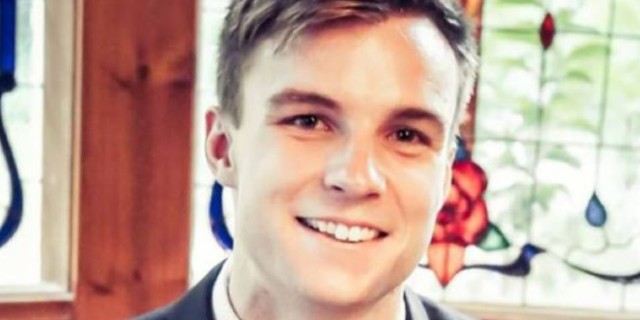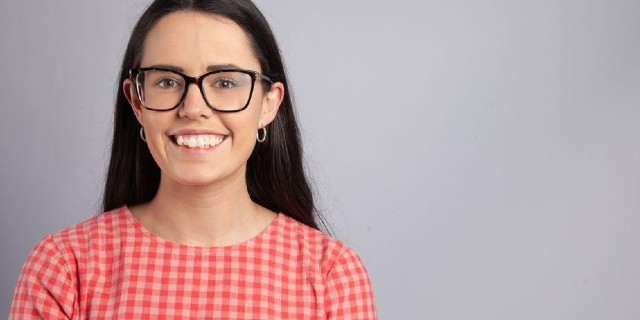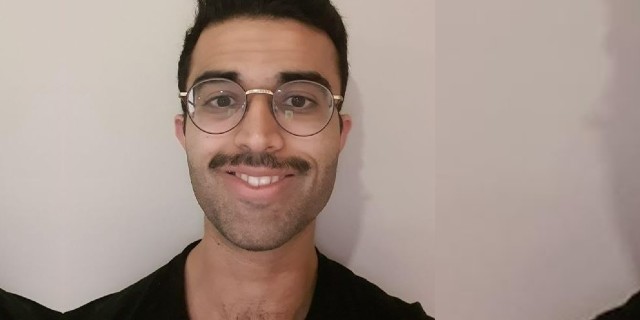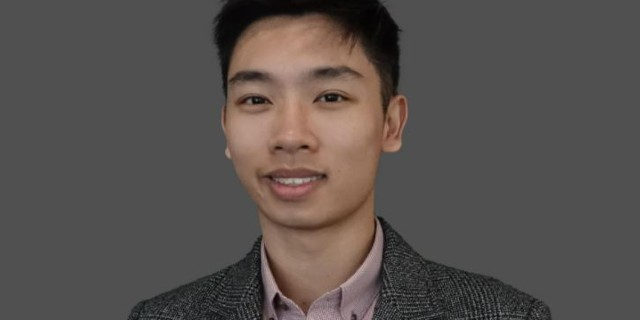After much research, discussion and feedback, the re-designed Doctor of Medicine (MD) curriculum offers diversity, discovery and opportunity
At the end of 2022, Professor John Prins stepped away from leading Melbourne Medical School, confident that he was leaving behind a newly redesigned Doctor of Medicine (MD) curriculum that is robust, relevant and future-focused.
For the past few years, Professor Prins and a team of colleagues and students have carefully revised the MD curriculum to ensure it is contemporary and prepares students for the diverse medical careers that await them.
The re-design has been a complex process. The curriculum, launched in 2022, delivers a raft of new elements, including MD Discovery subjects that allow students to essentially build their own medical degree. There is also more online content, which brings flexibility to manage busy study schedules, and earlier exposure to clinical experience.
There are also opportunities for MD students to undertake quality, collaborative research by integrating a PhD into their MD program.
Contemporary and consistent learning
“The curriculum needed a refresh – it had become outdated and overcrowded,” says Professor Prins.
“We are also now delivering the MD across multiple sites, including the end-to-end Rural Pathway at Shepparton which was introduced in 2022. We wanted to ensure that core content could be delivered online to guarantee consistency of teaching and content across all sites.”
The MD’s centralised digitally presented core curriculum sees every student access the same content, no matter where they are. Content is also easier to update, can be delivered in a variety of formats and is more accessible and relevant.
“Students can dip into content in advance and revise more easily. One frustration with the traditional curriculum is that students might see a patient on a ward with a particular problem but they may not learn about that problem until March the following year. With online content, students can access information as they need it,” says Professor Prins.
Opportunities for discovery
The redesign also recognises the importance of student choice. It introduces opportunities for students to tailor their medical degree to reflect their interests or take advantage of prior learning.
Professor Steve Trumble, Head of the Department of Medical Education, says the MD Discovery subjects allow students to explore topics and deep dive into potential future specialties.
So far, Discovery subjects include topics such as space medicine and the impacts of zero gravity on physiology and anatomy, rural health, sexual health, cancer, medical education and death and dying. A Discovery subject on translational research that showcases how research is undertaken in the clinical environment to inform clinical practice has been a popular choice.
“The previous medical course was very good and we haven’t thrown the baby out with the bath water. But the new curriculum offers increased flexibility and choice and students can focus on their interest areas and engage more deeply with their learning,” says Professor Trumble.
“Every Discovery option helps build each student’s professional career. We don’t want to overwhelm them or get in the way of core MD learning, but we want students to be enthusiastic about learning.”
Bringing forward clinical exposure
Designed by Associate Professor Lisa Cheshire and the Department of General Practice, the introduction of clinical placement in MD1 has also been carefully considered and much appreciated by the first students to undertake the redesigned curriculum in 2022.
“Usually, medical students spend the first couple of years locked in lecture theatres. However, we think it’s important for students to engage with patient care, research and clinical thinking early on, so we’ve introduced weekly clinical contact for students from the first weeks of the first year,” explains Professor Trumble.
“The students love being with GPs in the community or with hospital clinicians. That patient contact engages them with the purpose of their course — it reminds them why they are studying medicine.”
Integrating study pathways
Melbourne Medical School places a strong emphasis on the importance of research and is keen to produce graduates who are clinician researchers. The new curriculum also encourages students to integrate the MD with a PhD or a Master of Public Health (MPH).
Daniel Gould (BSc 2014) is one of the first MD students to transition to the MD-PhD program that comprises four years MD and three years PhD. Daniel graduates at the end of 2022.
He has worked with experienced clinical researchers, qualitative researchers and artificial intelligence experts to develop a machine learning-enabled risk prediction tool for total knee replacement recipients. Daniel has also investigated the views of patients and surgeons on the use of artificial intelligence in healthcare.
Daniel Gould
“At high school, I wanted to be an electrician but in Year 10 I did work experience and by lunchtime of day two I wondered how I’d make it through the rest of the week. I hated it!” says Daniel.
“Instead, I did science at the University of Melbourne and applied for medicine. I didn’t get in that year but succeeded on my second attempt. During my second year of the MD, I witnessed a total hip replacement and I thought if I can get paid to do that for a living, that’s as good as it gets.”
Creating connections
The integrated MD-PhD carries a significant workload but has brought benefits, such as opportunities to build professional connections Daniel would otherwise not have had.
“It opens doors to other projects clinically and research-wise. I want to apply for an orthopaedic training program that requires research components and I can now tick that box,” says Daniel.
Jasmine Davis
Jasmine Davis (BBiomed 2017) is the current President of the Australian Medical Students Association and is completing an integrated MD/MPH. She has studied in Shepparton and Echuca as part of the Extended Rural Cohort at the Department of Rural Health and is keen to practise in rural Australia.
“The rural placements really opened my eyes to the need for dedicated rural generalists and showed me that we have a long way to go in creating a healthcare system and environment in which people are not disadvantaged based on their location,” says Jasmine.
“Studying an MPH has also furthered my passion for a career in health advocacy and public policy. I don’t know exactly where my career will take me yet, but I am looking forward to helping reduce the health inequalities that rural and remote Australians face.”
Recognising First Nations health
The extensive MD curriculum redesign has also been developed with a greater recognition of the importance and value of diversity and First Nations health has been given a higher profile across the curriculum.
“First Nations health has often been seen as a separate part of medicine and we have changed the focus to acknowledge and understand that First Nations health is embedded in everything we do in medicine,” says Dr Ngaree Blow, Director of First Nations Health.
“The flow-on effect of this greater visibility in the MD is that we’re seeing more Aboriginal people applying to study medicine because they see the curriculum is culturally appropriate and there has been genuine collaboration with First Nations communities.”
Looking ahead
Professor Prins believes more can be done to open the MD to a broader cohort. He says increasing the modular design of the curriculum would allow more students from diverse cultural, geographical and socio-economic backgrounds to study medicine.
“We want to remove barriers and open other pathways. We want diversity in every sense so that more people who want to become doctors feel they can achieve that,” says Professor Prins.
“Traditionally, medicine is expensive to study but if the MD was modular, students could begin their study, work for six months to help finance themselves and then pick up their study again. We are the top medical school in the country but we are not complacent and we must continue to be adventurous and to lead.”
What the students think of the new MD curriculum:
-
Elizabeth McMahon is a first-year MD (Rural Pathway) student in Shepparton.
Elizabeth McMahon is a first-year MD (Rural Pathway) student in Shepparton.
“After doing my undergraduate degree in psychology I began the MD and I chose the University of Melbourne because of the Rural Pathway. I was born and raised in the middle of nowhere and the city and I have never gotten along! A program that facilitated learning medicine in a rural environment aligned with my plans for the future.
The introduction of the Discovery subjects also appealed to me and the early clinical exposure has been amazing. I was quite nervous on the first day in clinic but I felt very supported and that early clinical exposure has motivated me during hard nights of studying! It has also taught me about the importance of the doctor-patient relationship and communication skills. I feel very excited about MD2.”
-
Dhruv Chowdhry is a first-year MD (Rural Pathway) student in Shepparton.
“After doing three years of biomedicine at La Trobe University I was offered a place in the University of Melbourne MD program. I lived in Melbourne for a few years but am more comfortable in rural Australia, so the rural pathway felt right for me.
The first year of study has been interesting and I’ve particularly enjoyed going into clinical settings so early on. I like application-based learning where I can see a patient with symptoms and then talk to the GP about diagnosis and treatment. The online delivery of learning is also very helpful and makes learning more efficient.”
-
Planning Saw (BBiomed(Hons) 2021) is a first-year MD student in Melbourne.
“The redesign of the curriculum attracted me to Melbourne Medical School – particularly the early clinical experience. The first year has passed quickly and a highlight would have to be talking to patients, listening to their health journeys, and understanding how life circumstances have affected their health. In each patient interaction, there has always been a new lesson to learn.
The flexibility to explore unique interests through the Discovery module also attracted me to the University of Melbourne. My Discovery topic has been Social Determinants of Health Inequality. During my undergraduate studies, I co-founded a not-for-profit charity, Global Health Youth Connect, which aimed to educate and empower young people on global health challenges. The Discovery subject has given me a greater understanding of the multiple upstream determinants of health and how they intersect and affect health outcomes.”




